方法一:逐位判断
根据 与运算 定义,设二进制数字 $n$ ,则有:
- 若 $n & 1 = 0$ ,则 $n$ 二进制 最右一位 为 $0$ 。
- 若 $n & 1 = 1$ ,则 $n$ 二进制 最右一位 为 $1$ 。
根据以上特点,考虑以下 循环判断 :
- 判断 $n$ 最右一位是否为 $1$ ,根据结果计数。
- 将 $n$ 右移一位(本题要求把数字 $n$ 看作无符号数,因此使用 无符号右移 操作)。
算法流程:
- 初始化数量统计变量 $res = 0$ 。
- 循环逐位判断: 当 $n = 0$ 时跳出。
res += n & 1: 若 $n & 1 = 1$ ,则统计数 $res$ 加一。n >>= 1: 将二进制数字 $n$ 无符号右移一位( Java 中无符号右移为 "$>>>$" ) 。
- 返回统计数量 $res$ 。
<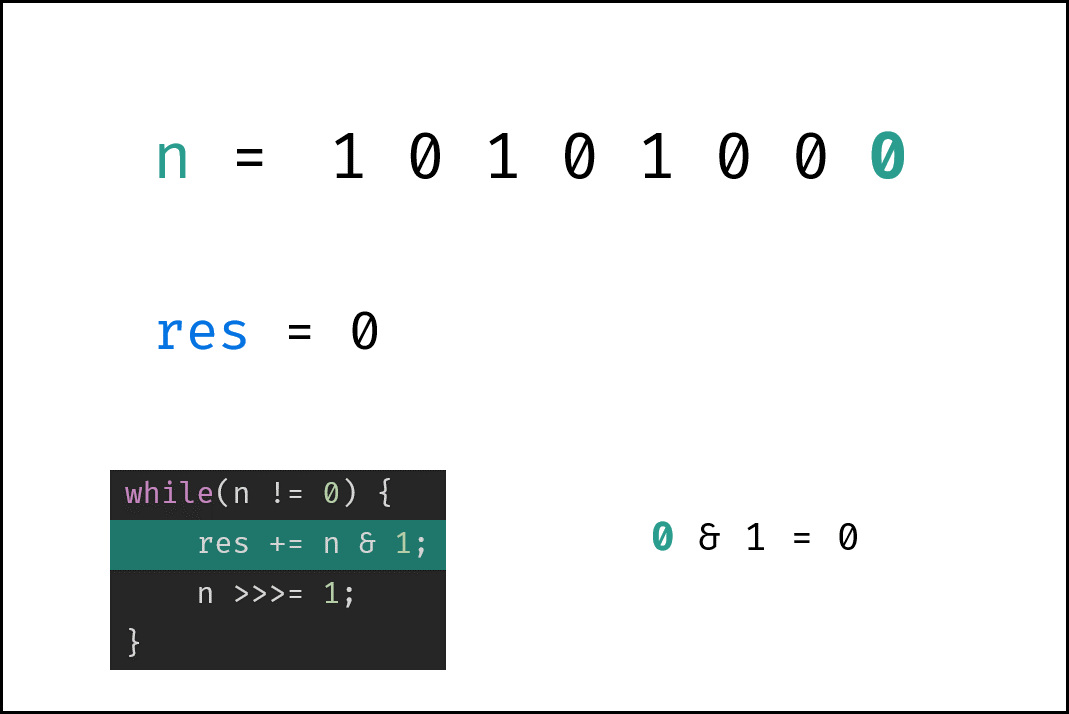 ,
,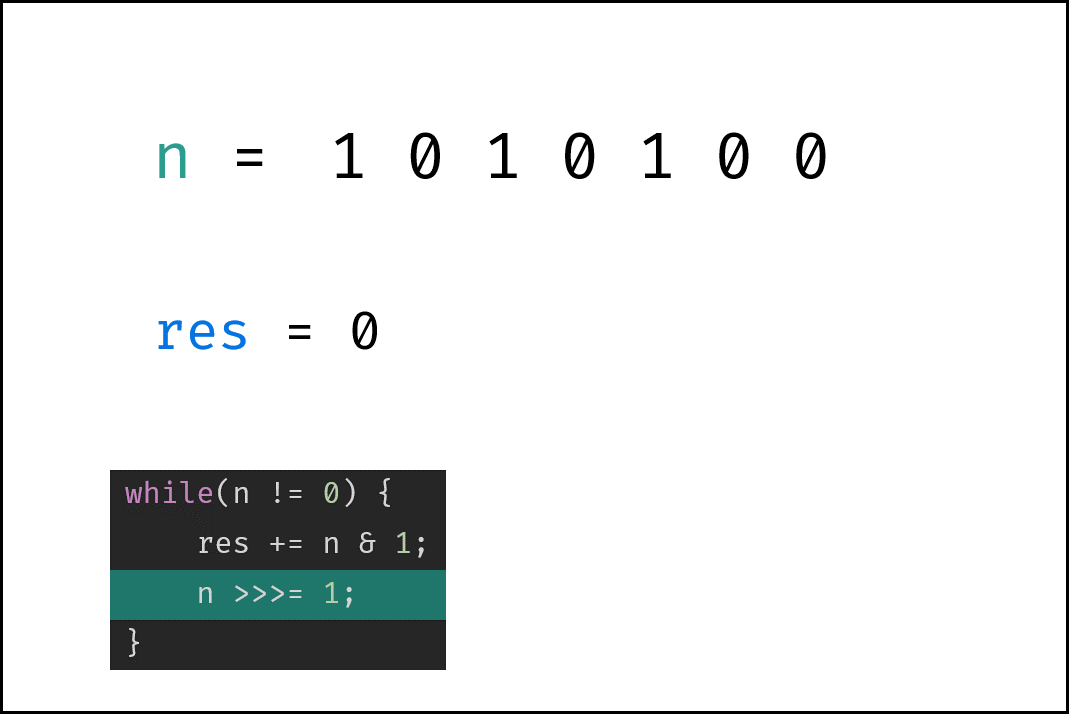 ,
,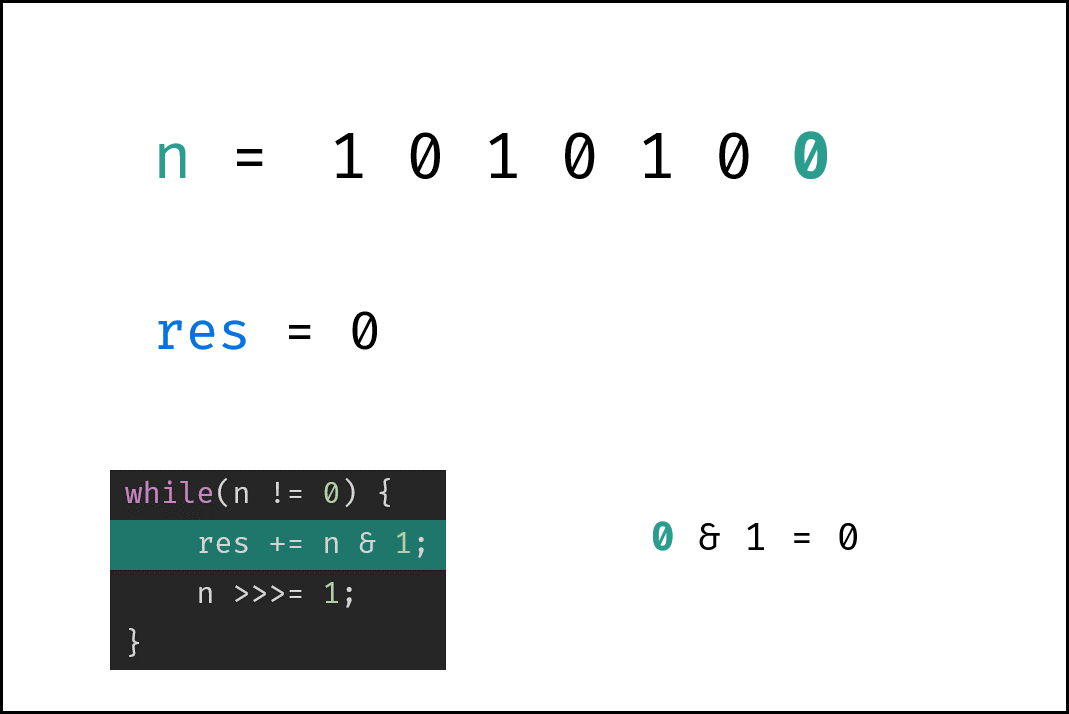 ,
,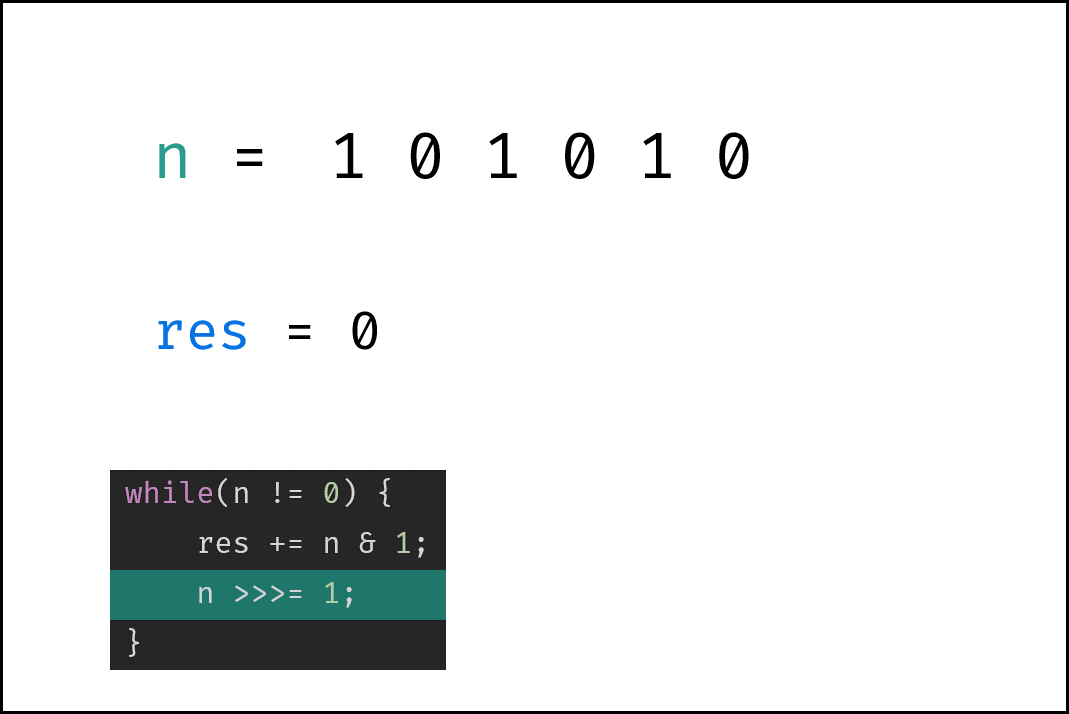 ,
,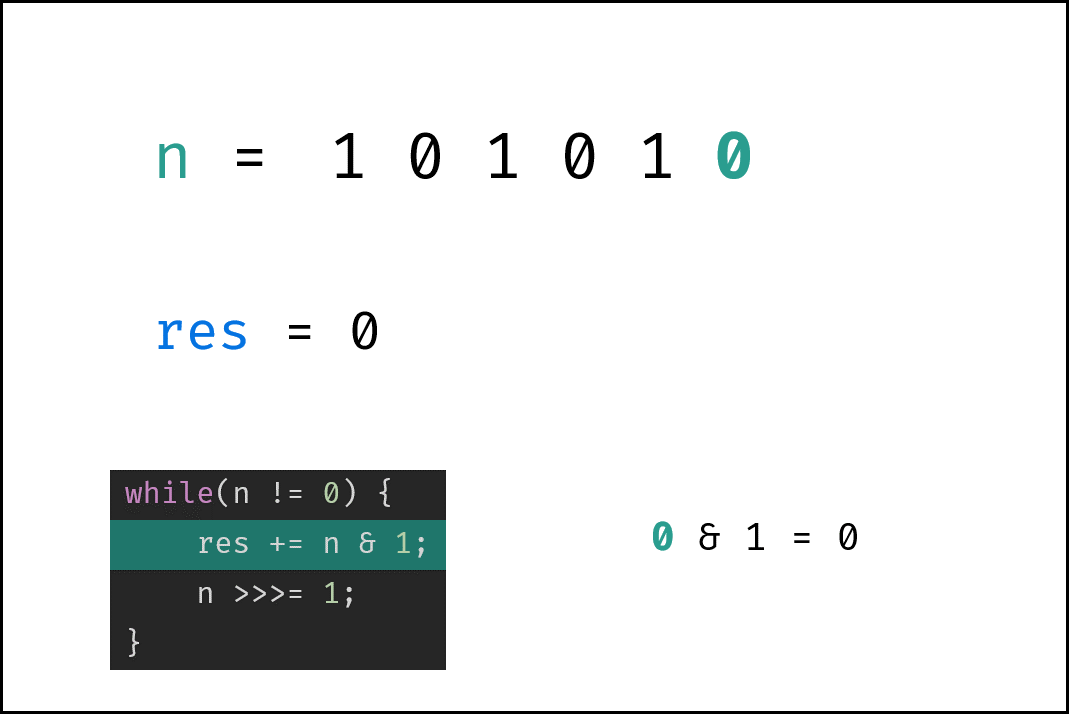 ,
,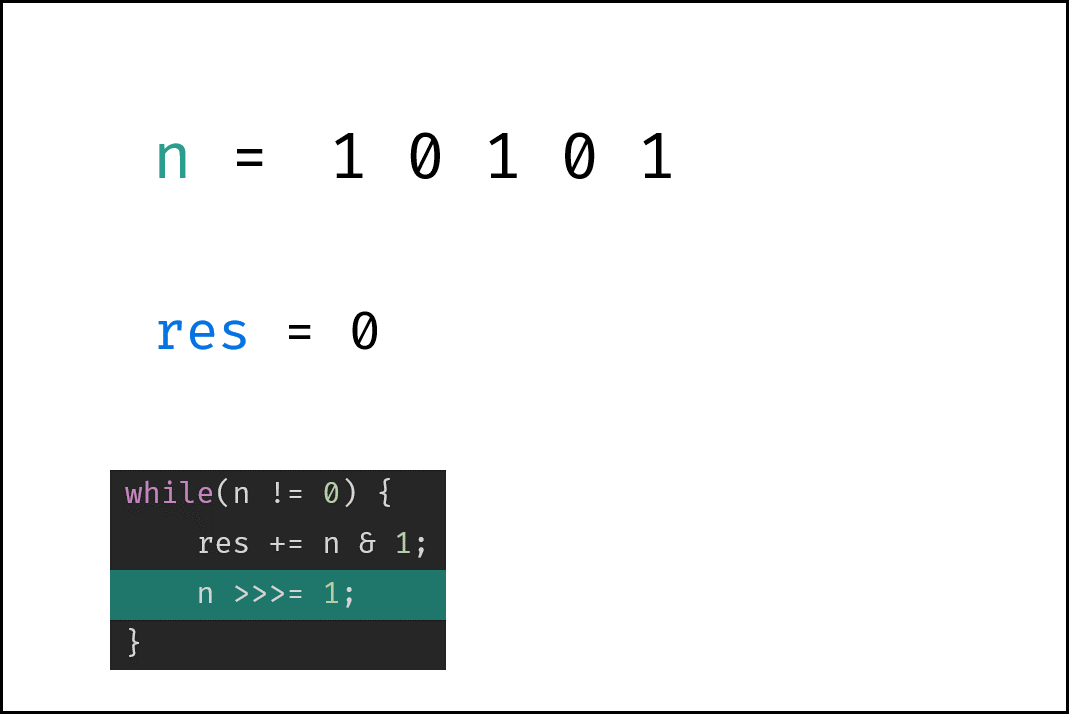 ,
,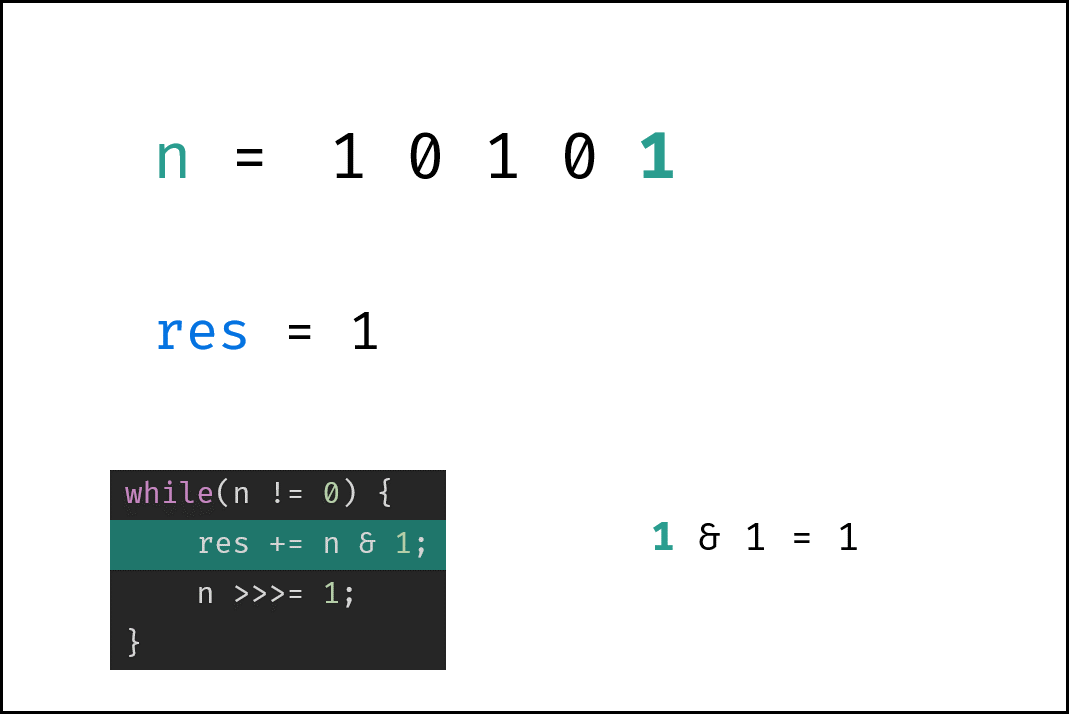 ,
, ,
,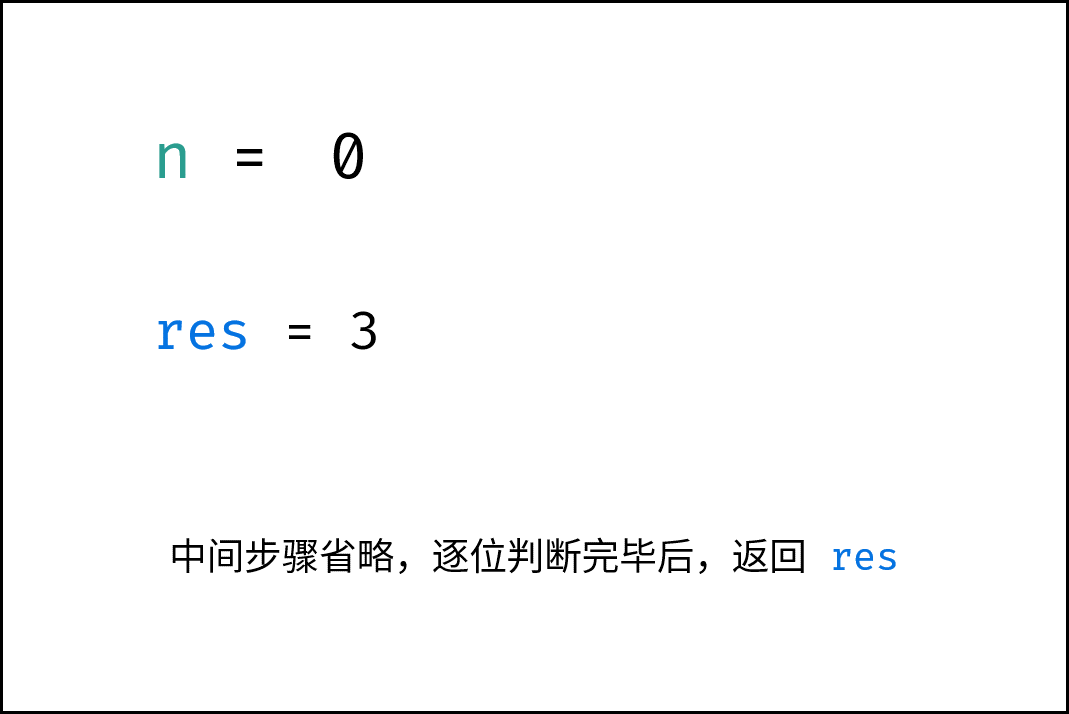 >
>
代码:
Python
class Solution:
def hammingWeight(self, n: int) -> int:
res = 0
while n:
res += n & 1
n >>= 1
return resJava
public class Solution {
public int hammingWeight(int n) {
int res = 0;
while (n != 0) {
res += n & 1;
n >>>= 1;
}
return res;
}
}C++
class Solution {
public:
int hammingWeight(uint32_t n) {
unsigned int res = 0; // c++ 使用无符号数
while (n != 0) {
res += n & 1;
n >>= 1;
}
return res;
}
};复杂度分析:
- 时间复杂度 $O(\log n)$ : 此算法循环内部仅有 移位、与、加 等基本运算,占用 $O(1)$ ;逐位判断需循环 $log_2 n$ 次,其中 $\log_2 n$ 代表数字 $n$ 最高位 $1$ 的所在位数(例如 $\log_2 4 = 2$, $\log_2 16 = 4$)。
- 空间复杂度 $O(1)$ : 变量 $res$ 使用常数大小额外空间。
方法二:巧用 $n & (n - 1)$
$(n - 1)$ 作用: 二进制数字 $n$ 最右边的 $1$ 变成 $0$ ,此 $1$ 右边的 $0$ 都变成 $1$ 。
$n & (n - 1)$ 作用: 二进制数字 $n$ 最右边的 $1$ 变成 $0$ ,其余不变。
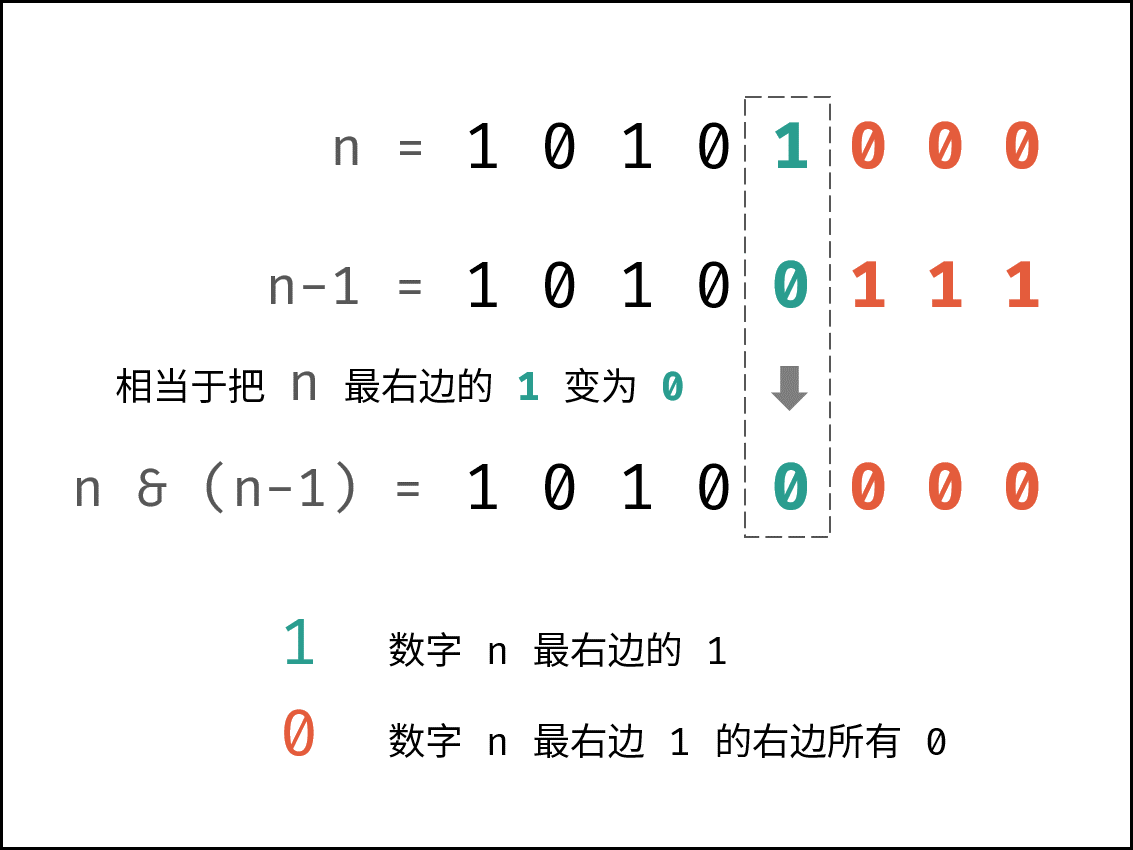
算法流程:
- 初始化数量统计变量 $res$ 。
- 循环消去最右边的 $1$ :当 $n = 0$ 时跳出。
res += 1: 统计变量加 $1$ 。n &= n - 1: 消去数字 $n$ 最右边的 $1$ 。
- 返回统计数量 $res$ 。
< ,
,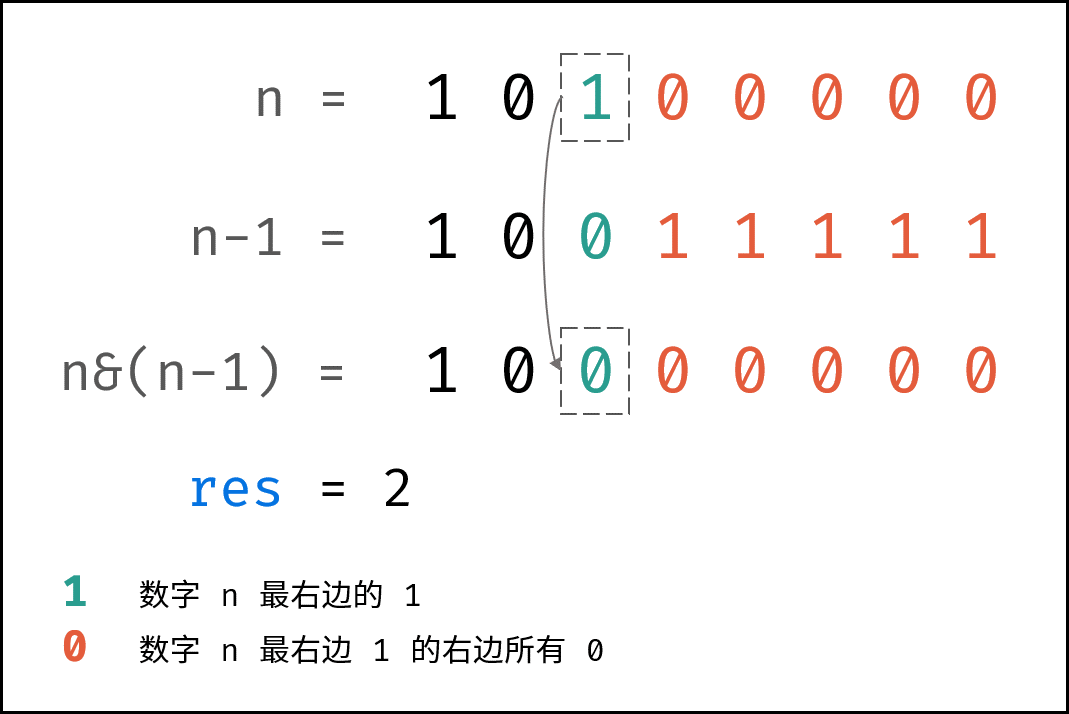 ,
,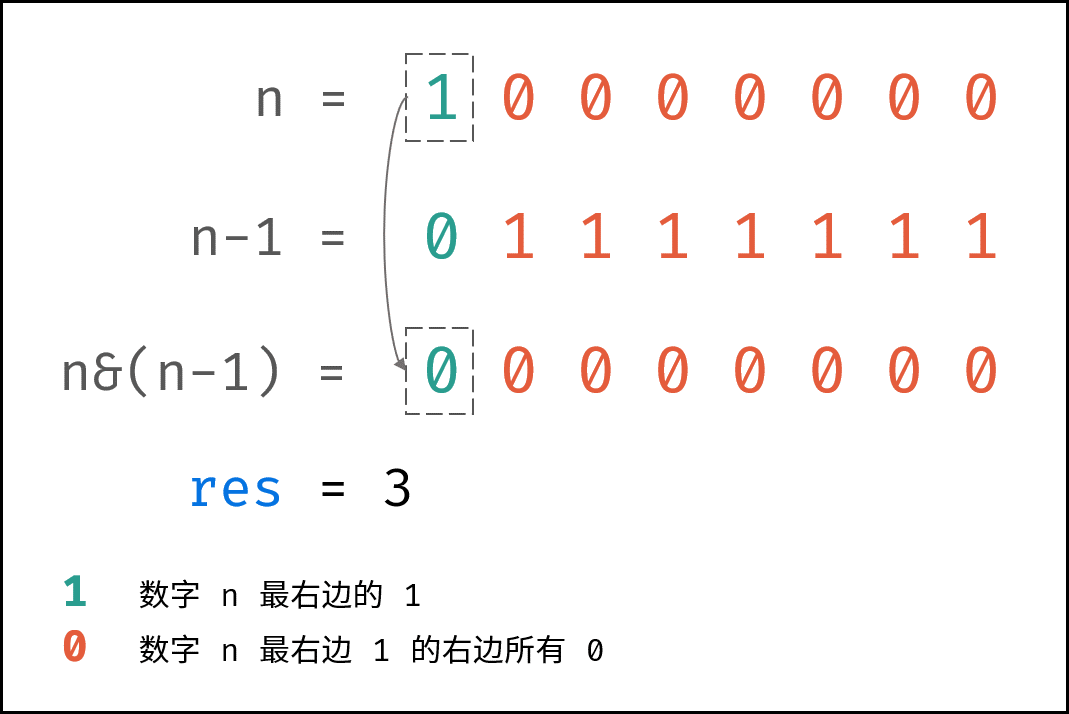 ,
,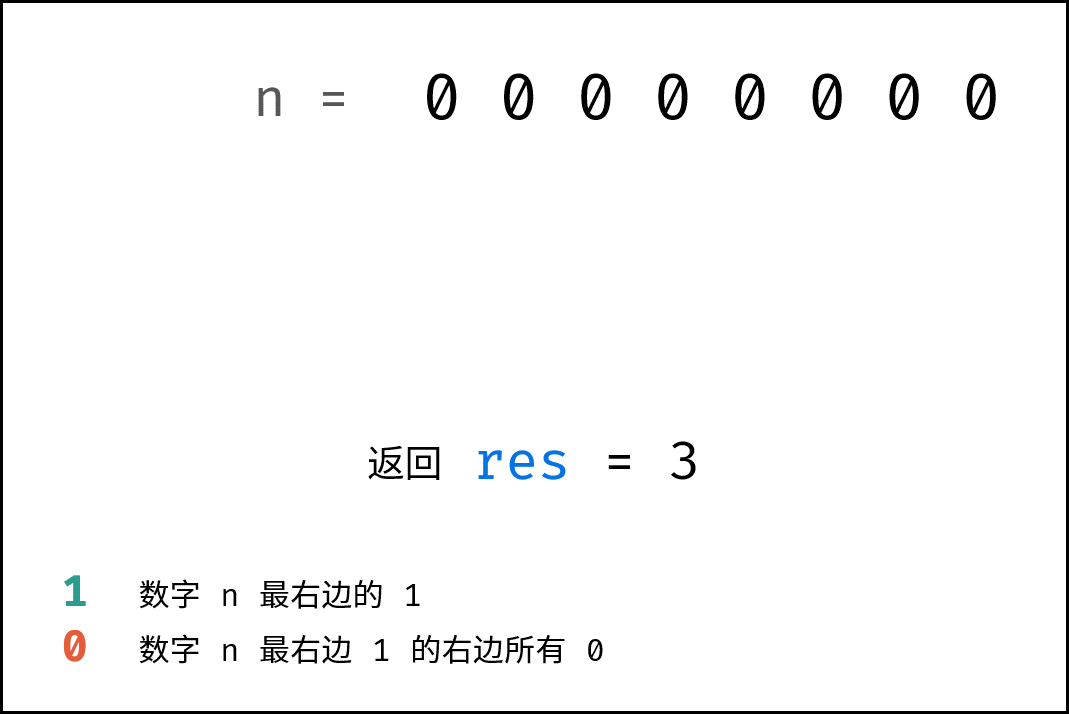 >
>
代码:
Python
class Solution:
def hammingWeight(self, n: int) -> int:
res = 0
while n:
res += 1
n &= n - 1
return resJava
public class Solution {
public int hammingWeight(int n) {
int res = 0;
while (n != 0) {
res++;
n &= n - 1;
}
return res;
}
}C++
class Solution {
public:
int hammingWeight(uint32_t n) {
int res = 0;
while (n != 0) {
res++;
n &= n - 1;
}
return res;
}
};复杂度分析:
- 时间复杂度 $O(M)$ : $n & (n - 1)$ 操作仅有减法和与运算,占用 $O(1)$ ;设 $M$ 为二进制数字 $n$ 中 $1$ 的个数,则需循环 $M$ 次(每轮消去一个 $1$ ),占用 $O(M)$ 。
- 空间复杂度 $O(1)$ : 变量 $res$ 使用常数大小额外空间。